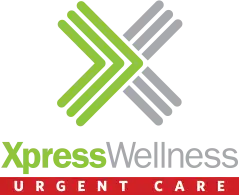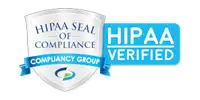Hyperactive kids who can’t pay attention to the teacher. A boy with endless energy to play and run. A girl who lacks impulse control. For many, this is the perception of ADHD (attention deficit/hyperactivity disorder). It sounds really familiar, right? Most people are familiar with one or two of the symptoms of ADHD or have a relative or friend who had an ADHD diagnosis as a child.
Many people consider it a childhood disorder. However, ADHD is common in adulthood. In fact, 4.4% of American adults have ADHD. That’s an enormous number – especially when you consider ADHD may be underdiagnosed among adults. Because it is often misunderstood, learning what ADHD looks like in adults, how to get help if you or a loved one exhibits ADHD symptoms, and learning strategies for management can be beneficial.
So What is ADHD?
According to the CDC, people with ADHD show a persistent pattern of inattention and/or hyperactivity–impulsivity that interferes with functioning or development. ADHD is one of the most common neurodevelopmental disorders, usually associated with and diagnosed during childhood. Unfortunately, ADHD often goes undiagnosed in children and adults, and some people do not formally find a diagnosis until adulthood.
Here’s what makes ADHD so hard to diagnose and understand: no single test can help clinicians diagnose ADHD in adults or children. Reaching a formal diagnosis can take time and patience. General practice physicians, pediatricians and mental healthcare providers (physiatrists or psychologists) can help diagnose, and behavioral healthcare providers can help manage ADHD symptoms.
What Are The Signs or Symptoms of ADHD?
In childhood, there are signs of ADHD that parents, clinicians and teachers can look for. A child might:
- daydream a lot
- forget or lose things a lot
- squirm or fidget
- talk too much
- make careless mistakes or take unnecessary risks
- have a hard time resisting temptation
- have trouble taking turns
- have difficulty getting along with others
But as someone grows into adulthood, they may learn to cope with some of their ADHD signs from childhood. Those signs may go away, but often other behaviors remain or develop. There are a few common signs of ADHD in adults. Not every person with ADHD shows all these, but likely a combination of a few.
Common signs of ADHD in adults:
- Inattention
- Lack of focus
- Poor time management
- Weak impulse control
- Exaggerated emotions
- Hyperfocus
- Hyperactivity
- Executive dysfunction
- Lacking emotional regulation
Clinicians classify common behaviors into three “presentations” or types to describe a person’s ADHD-related behaviors and symptoms. These three are:
- ADHD predominantly inattentive presentation
- ADHD predominantly hyperactive-impulsive presentation
- ADHD combined presentation
Finding a behavioral healthcare provider after diagnosis can help someone with ADHD learn how to manage their symptoms and navigate the world in a healthy way. The behavioral healthcare provider can use your ADHD type (or presentation) to begin developing strategies to manage it.
A Day in the Life of An Adult Woman With ADHD
This is the story of the daily struggles of Riley, an adult with ADHD.
Riley is excited about the promises of a new year. The new year brings opportunities to make changes. On Sunday, Riley downloaded an app promising to help with organization.
On Tuesday, the app is forgotten because forming a habit is difficult for adults with ADHD and requires consistency. Riley has a set routine. No matter how unproductive it may be, it’s hard for her to change what she’s used to. The jolt of adrenaline she received when she downloaded the organization app – dreaming of having her life together – is now gone. The mundane tasks remain, and her routine has continued. Time management is an ADHD symptom she notes to discuss she has her next counseling appointment.
After arriving at work late for the second time this week, Riley turns on her computer. She is very good at her job, especially when deadlines are given because she has the rush and can process everything more precisely and concisely.
But, this is just a typical Wednesday with no deadlines looming, this is going to be a long day.
The time is now 9:45 a.m., and Riley picks up her phone. She then clicks on TikTok for a second. Her lack of focus is an ADHD sign she’s battled her whole life.
The time is now 11:00 a.m. A text from her boss asks for a meeting at 1:30 p.m. Riley confirms and is flooded with doom. By the time 1:30 approaches, she has all but packed up her desk. She’s convinced herself she is getting fired. (Emotional regulation is difficult for many with an ADHD diagnosis.)
It’s 1:30 p.m., and Riley heads to her boss’s office. Sitting with a raised heartbeat, sweaty palms and all the typical anxiety symptoms. Her boss presents Riley’s annual evaluation. Realization floods her: “Oh! I forgot that it was supposed to be today!” she thinks.
She was praised for her exemplary auditing skills over the past year and encouraged to continue her good work.
At 5 p.m., following a very productive afternoon, Riley’s mind is flooded while driving home with everything she needs to do this evening. Once home, she sits on the couch. Minutes pass, then an hour. She is completely exhausted. She turns on the TV to watch a couple of shows to decompress after a long day.
Tomorrow will be different, she thinks.
Is ADHD a Disability?
After reading Riley’s story, you may wonder, how can someone with ADHD overcome their challenges and manage their ADHD symptoms? Is ADHD a disability? In short, yes. It is a disability, but for many, it is manageable with the right help.
Many people consider ADHD to be an incredibly complex developmental disability that presents itself in a multitude of ways. It is not simple. Attitude Magazine shares the following about ADHD: “Neuroscience, brain imaging, and clinical research tell us a few important things: ADHD is not a behavior disorder. ADHD is not a mental illness. ADHD is not a specific learning disability. ADHD is, instead, a developmental impairment of the brain’s self-management system. Both adults and children can be diagnosed with ADHD.”
Under the Americans with Disabilities Act and the Social Security Act, ADHD is considered a disability that qualifies some individuals for support. The rules and regulations that determine who receives this kind of support are complex, and disability support is usually reserved for those with severe symptoms that impair someone’s ability to work significantly. If you have an ADHD diagnosis and struggle to work, you might consider discussing what support exists to help you with your healthcare provider.
How to Find Help for Diagnosing and Managing ADHD
If you read Riley’s story and thought, “Goodness, that sounds a lot like me!” you may want to consider contacting your primary care provider or connecting with a licensed behavioral health provider at Xpress Wellness. With providers across Oklahoma, we are a great place to begin. If you already have an ADHD diagnosis and need support and strategies to manage ADHD symptoms better, schedule an appointment today.





